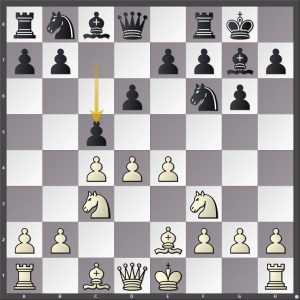In order to provide you with a comprehensive repertoire against the King’s Indian Defense, I already prepared a second Chessable course, covering all the smaller lines which are available to Black. As the Bayonet Attack appears to be clearly better for White, there is quite some motivation for Black to deviate. The problem, however, is that the huge majority of the sidelines also provide White with a clear advantage. Only a couple of lines might confine White’s advantage to something like 0.6 pawn units, which is also a good result for White. This course will most likely be published in October and will contain 48 chapters.
There is one chapter on Black’s 5th move alternatives, but the relevant variations start on move 6 with 6…Bg4 and 6…c5.

1.d4 Nf6 2.c4 g6 3.Nc3 Bg7 4.e4 d6 5.Nf3 0–0 6.Be2 Bg4

1.d4 Nf6 2.c4 g6 3.Nc3 Bg7 4.e4 d6 5.Nf3 0–0 6.Be2 c5
Against 6…c5 I recommend 7.0-0, when Black’s best option is to steer the game into the Accelerated Fianchetto by taking on d4. The problem is, that this position is clearly better for White after the most powerful continuation. Hence, I deliver a “refutation”of this opening en passent. The biggest bulk of chapters arises after 6…e5 7.0-0.

1.d4 Nf6 2.c4 g6 3.Nc3 Bg7 4.e4 d6 5.Nf3 0–0 6.Be2 e5 7.0-0
Now, Black has a wide choice of moves, which are sorted here according to frequency:
- 7…Nbd7
- 7…Na6
- 7…exd4
- 7…c6
- 7…Qe8
- 7…Nh5
- 7…Bg4
- 7…a5
- 7…Re8
- 7..h6
- 7…Qe7
These two Chessable course together will prepare you well for teaching the king’s indian players a lesson they won’t easily forget.